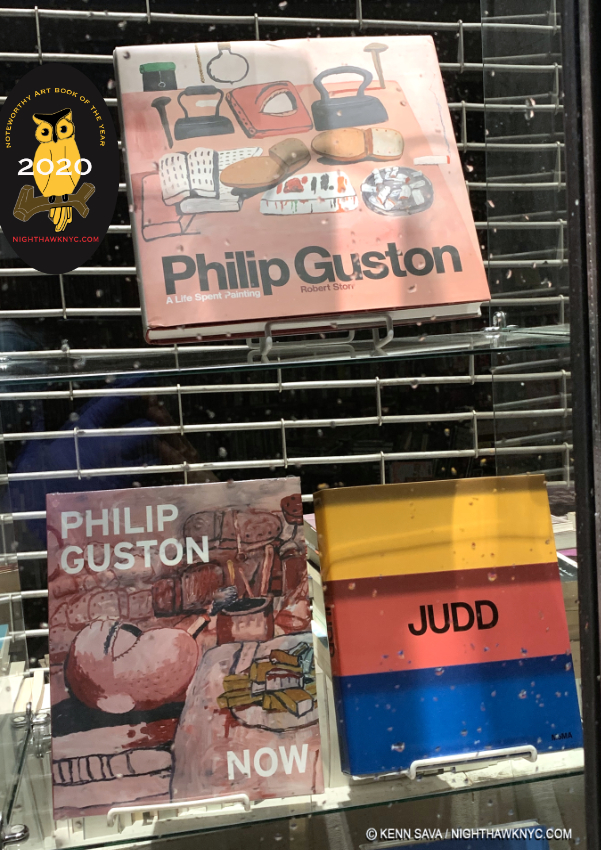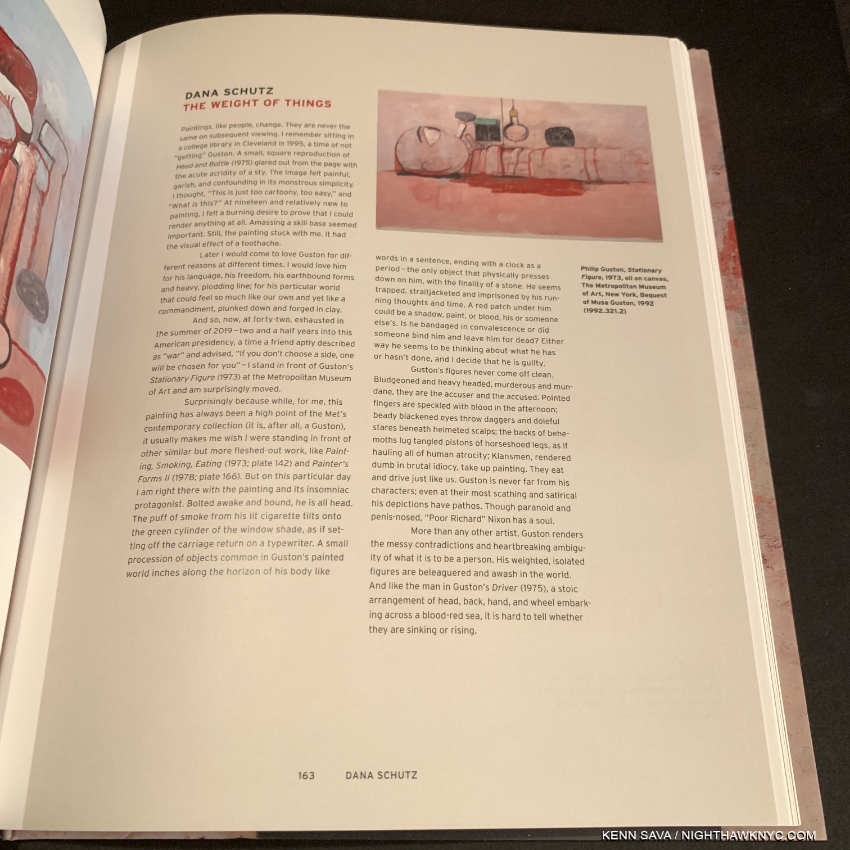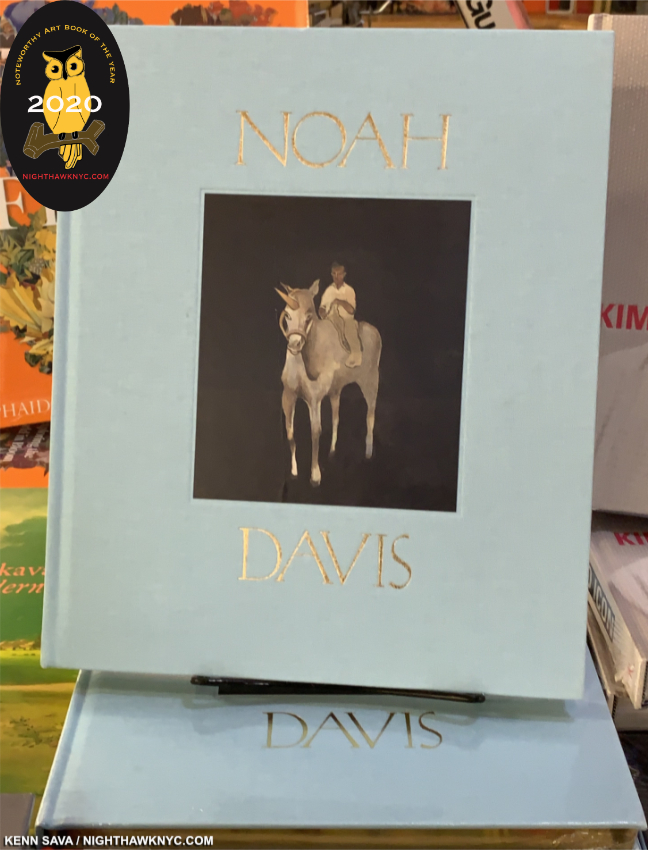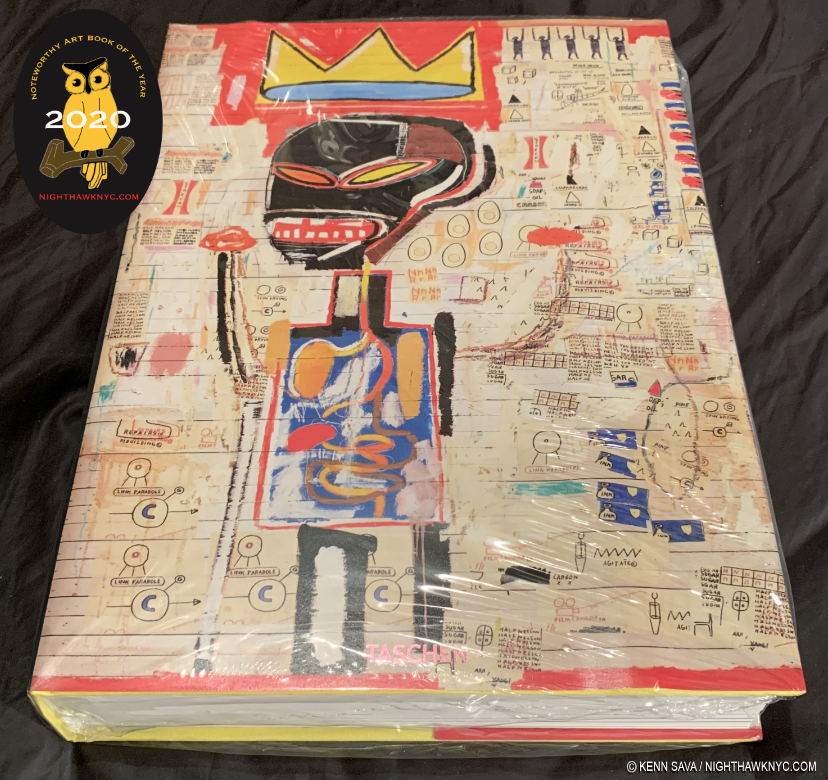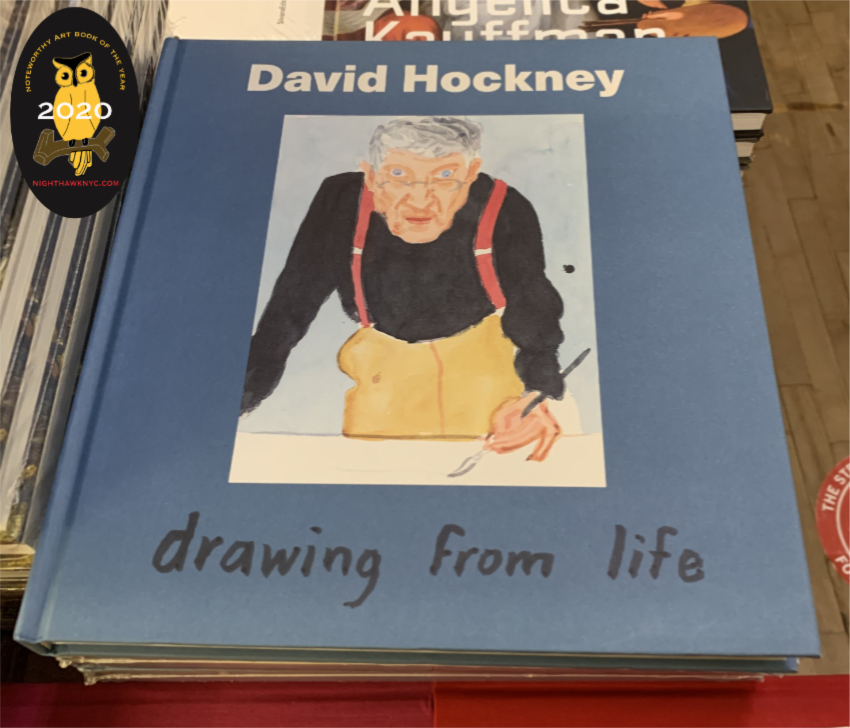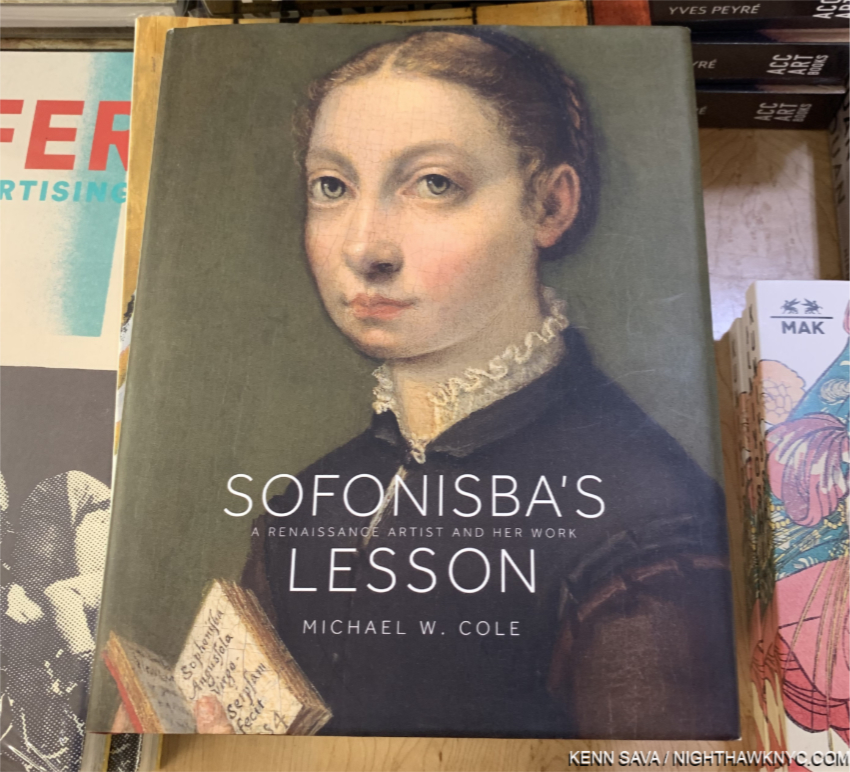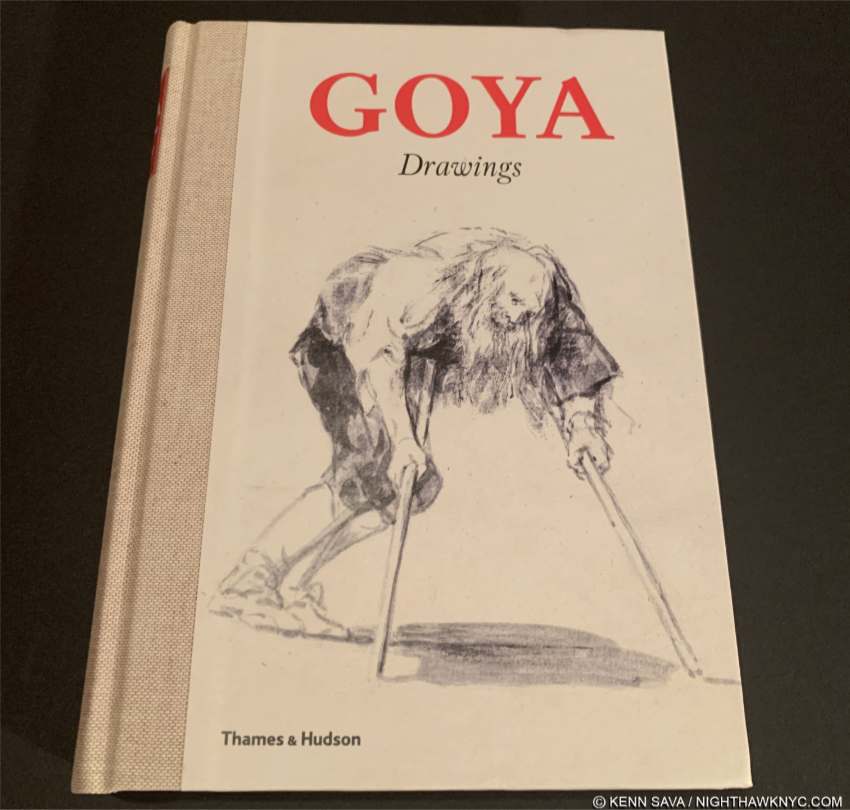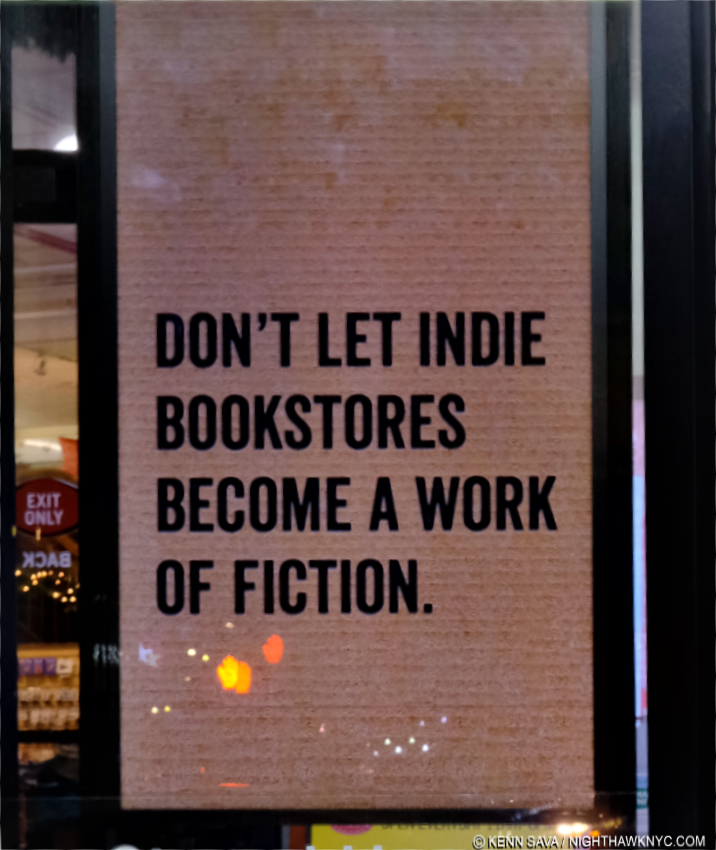Written & Photographed by Kenn Sava
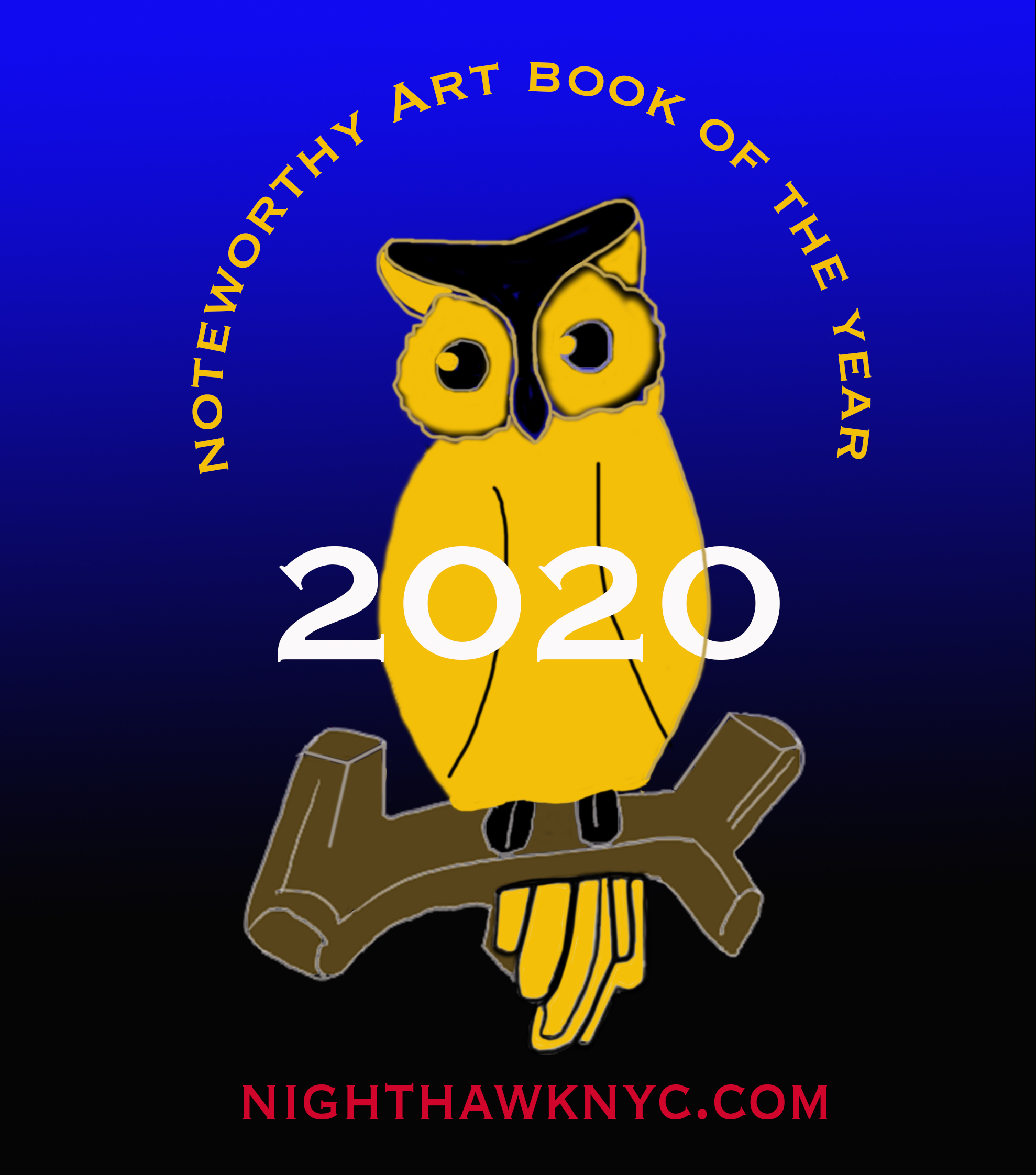
While PhotoBooks have been an all-encompassing passion of mine these past four+ years (though of course I had some earlier), Art Books have been a passion ever since I first saw one, or, for over half a century. Before I could go to a gallery or museum, here was a way to see all, or a selection of, the work of an Artist or a group of Artists- in one portable package. I was instantly fascinated by that, and I still am. Yes, physical books because Art, or Photo, eBooks are few and far between- still. The quality of the physically printed Photo, or Photo of a Painting, is still unsurpassed. In 2020, museums and galleries were closed for much of the year all over the world. For me, and perhaps innumerable others, Art Books were there, 24/7, to provide a means of exploring, seeing and studying Art. Fittingly, as they were for me before I was able to go to shows in person, this year, in my world entirely without any other people for 11 months, Art & PhotoBooks were my sole companions.
Having presented my NoteWorthy PhotoBooks, 2020, (as well as in 2019, and 2018), this year, I’ve decided to also present my thoughts on the Art Books I’ve seen in 2020 that I most highly recommend for the first time. All of these books, I highly recommend, so I’m not picking one out of them as “most highly recommended.” Here they are-
NoteWorthy Art Books of the Year, 2020
Philip Guston Now, DAP/National Gallery of Art, and
Philip Guston: A Life Spent Painting
After a gap of 15 years between retrospectives of his work, two excellent overviews of Philip Guston’s remarkable oeuvre are published in one year. Deciding which one to get is hard. Both have a lot going for them. For someone looking for one book with the most images in the largest size, along with one of the finest texts of Robert Storr’s career, Philip Guston: A Life Spent Painting is the choice. For someone looking for the only place to see the most controversial show of 2020, now postponed to 2024, along with an equally excellent text, Philip Guston Now is an excellent choice. For the serious Guston aficionado, the only choice is to buy both. For someone already familiar with Philip Guston’s work who wants to learn more about his work, either book will provide countless fresh insights.
Philip Guston: A Life Spent Painting may be the finest achievement in the long career of author Robert Storr. Yet, I give special credit to Philip Guston Now for being one of the most remarkable exhibition catalogs I’ve ever seen. Personally, I find its text by co-curators Mark Godfrey, Alison de Lima Greene and Kate Nesin, to be nothing short of brilliant both in its content and how it flows seamlessly from period to period through the Artist’s long career, treating the whole in a fresh way. This, alone, would be enough for a high recommendation, but the book is taken to another level by the addition along the way of pieces by 10 Contemporary Artists- William Kentridge, Glenn Ligon, Tacita Dean, Peter Fischli, Trenton Doyle Hancock, David Reed, Dana Schutz, Amy Sillman, Art Spiegelman and Rirkrit Tiravanija. Most provide unique insights into specific works by Philip Guston and a number of them directly address the “hooded”/klan works, the focus of the controversy around the show the book was published to accompany.
The show, also titled Philip Guston Now, was first postponed due to covid to July, 2021, then controversially postponed, again, to 2024 by the National Gallery of Art, Washington; the Museum of Fine Arts, Boston; the Museum of Fine Arts, Houston; and Tate Modern, London, where it is scheduled to be mounted. “We are postponing the exhibition until a time at which we think that the powerful message of social and racial justice that is at the center of Philip Guston’s work can be more clearly interpreted.1.” Like many others, I am at a loss to understand that statement. On the one hand, it denigrates the intelligence of visitors. On the other, what if 2024, isn’t that nebulous “time” the message speaks of under whatever unmentioned criteria they’re using to determine it? However, the show’s catalog did come out this year in anticipation of the originally scheduled opening. Its inclusion of the featured pieces by those 10 Contemporary Artists is exactly the kind of thing Art monographs need more of, in my view, as they struggle to remain relevant- given how many other books already exist on most Artists, and the large expense involved in creating them in what may be increasingly challenging times for museums who, largely, publish these books.
The reproductions of the Art in Philip Guston Now only adequate in terms of quality, in my opinion, are best used for reference to the points large and small being made throughout the text. Some of the Art is reproduced one image on a page with a copious border, others are 4 to a page. It does include new Photos taken in Philip Guston’s studio, which appears to be largely as he left it. The other big reason for getting this book is to see the works in, and to have a record of, this important show, so you can prepare yourself to see it, IF it ever opens. Also important to note- many works will not appear in each of the four scheduled stops the show will make. So, the catalog is the only place to “see” the whole show.
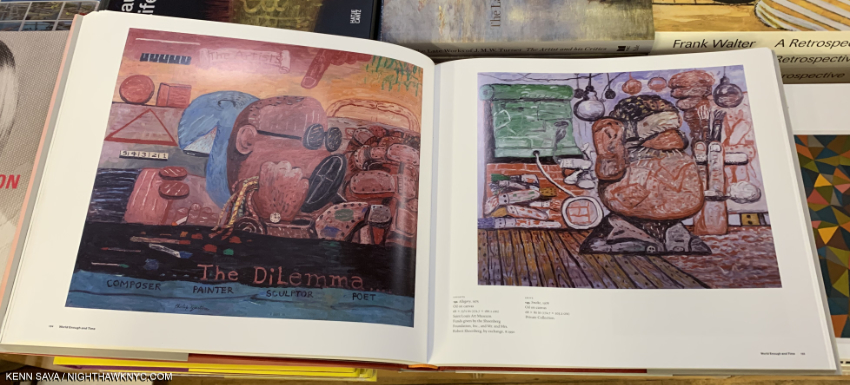
The large 13.35 by 11.5 inch pages create an almost 27 inch spread making the images in Philip Guston: A Life Spent Painting the largest in any Guston book to date, and with over 850, the most images in any Guston book as well. This will make it a slam dunk choice for many, but take a look at both.
The illustrations are better and more numerous (850) in Philip Guston: A Life Spent Painting, whose 13 1/2 by 11 1/2 inch size is more accommodating close study. Get that book for the best current overview of the Art. As for its text, Robert Storr contributes one of his finest efforts, apparently the results of many years of work. As good as the text in Philip Guston Now is, Mr. Storr’s doesn’t take a back seat to any Guston book I’ve seen to date, which is why a recommendation for both books is the only one I can give at this point. They join Philip Guston: Retrospective, published by the Modern Art Museum of Fort Worth in 2003, to accompany the last major retrospective of his work and now out of print, my go-to Guston book to this point, as standard references to the work of this enduringly contemporary Master.
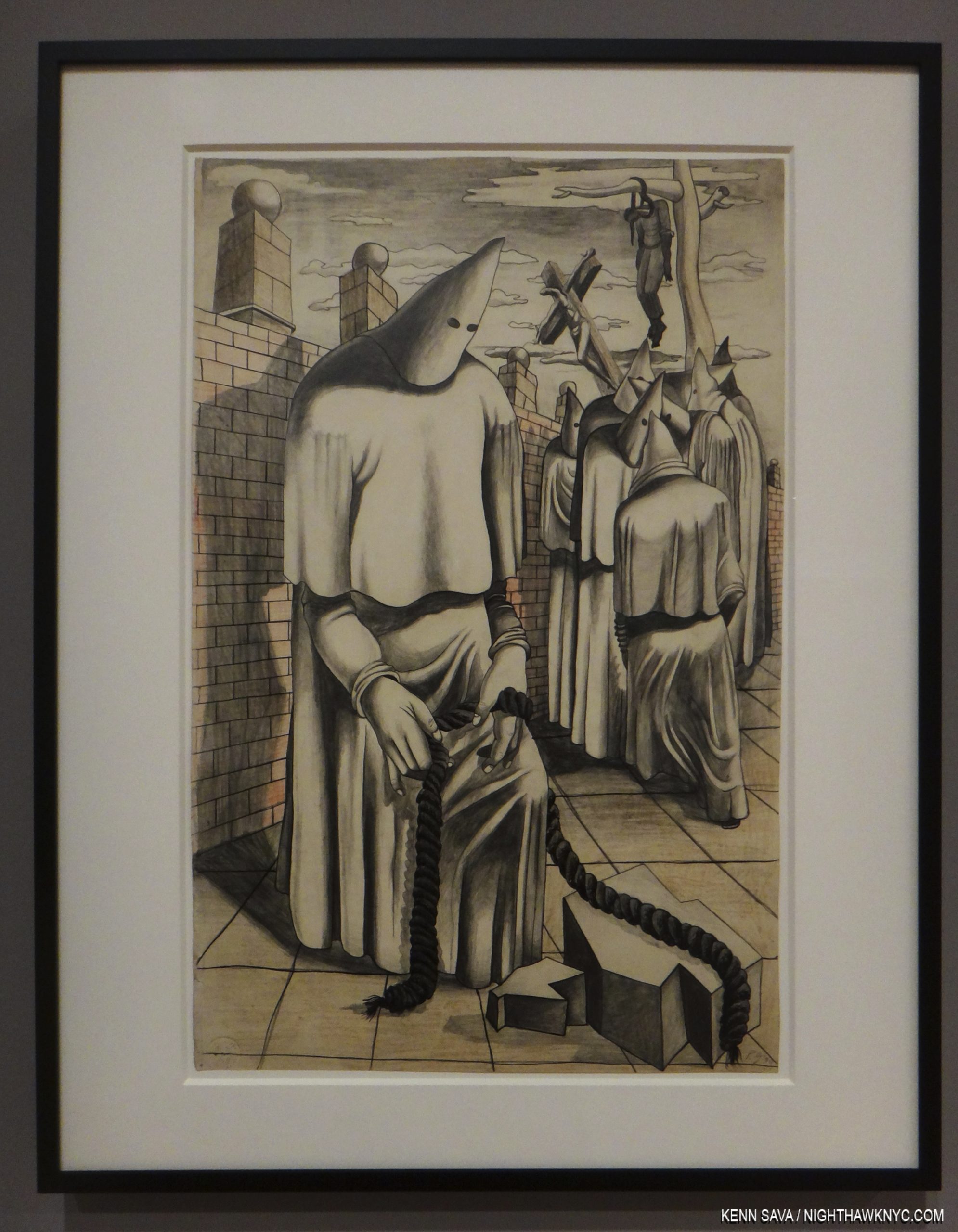
Drawing for Conspirators, 1930, Graphite pencil, pen and ink, colored pencil, and wax crayon on paper, seen at the Whiney Museum in July, 2015, in America Is Hard To See, the most recent showing of this work. A number of the essays in Philip Guston Now reference this work.
Before continuing, I feel I must briefly address the controversy centered around the show’s inclusion of Philip Guston’s klan Paintings. I’ve been somewhat surprised that the attention seems to focus on his late klan pieces. I think it’s important to remember that they go back to when the Painter was about 18. In Philip Guston Retrospective, the backstory is relayed on pages 16 & 17. It begins by quoting Mr. Guston-
“I was working at a factory and became involved in a strike. The KKK helped in strike breaking so I did a whole series of paintings on the KKK. In fact I had a show of them in a bookshop in Hollywood, where I was working at that time. Some members of the klan walked in, took the paintings off the wall and slashed them. Two were mutilated. That was the beginning.”
(The text then continues) “The Ku Klux Klan, also known as the Invisible Empire, had a significant membership in California in the 1930s and 1940s, and Los Angeles County was its most active Klavern. Guston and several other of his friends also painted portable murals for the John Reed Club on the theme of ‘The American Negro.’ Guston’s submission was particularly volitile. Based on the Scottsboro case, in which nine black men were sentenced (many said on false and circumstantial evidence) to life in prison for raping a white girl. Guston’s mural depicted a group of hooded figures whipping a black man. The murals were eventually attacked and defaced by a band of ‘unidentified’ vandals. The experience of seeing the effect of art on life and life on art never left Guston, and the unsettling image of the hooded figure was branded into his visual imagination.”
In the 1930s, in addition to strike breaking, the klan also targeted Jews. Philip Guston, originally Philip Goldstein, was Jewish. Of course, their main target were Blacks.
Artists don’t live in the nebulous times those 4 museum directors speak of in their postponement statement. They live, work, and often respond to, the times of their lives. Philip Guston lived long enough to see that racism was deeply embedded in the fabric of American life, possibly even in his own life. I believe those are things that may have influenced his later hooded figure/klan works, though they are for each viewer to interpret for his or herself. If this ins’t the time for all of us to look inside at ourselves and see how we can be better, how do we know 2024 will be a better time to do so?
NoteWorthy Art Book of the Year, 2020
Noah Davis, David Zwirner Books. An early candidate for the most important new Art monograph of the new decade might be hard to top for that title in the next 9 years. Noah Davis passed away of cancer at the very young age of 32 on August 29, 2015. Still, the amount he accomplished and the work he created in such a short life will live on indefinitely. Editor Helen Molesworth was Mr. Davis’ personally chosen curator, and she curated the show that opened earlier this year in NYC, which I wrote about before it moved to The Underground Museum, L.A.., which Noah Davis founded with his wife, the Artist Karon Davis. The text includes interviews with those who knew Mr. Davis, including legendary Painter Henry Taylor, Deana Lawson, Lindsay Charlwood, Dagny Corcoran, Daniel DeSure, Thomas Houseago, and Venus X by Ms. Molesworth. Only the second book on his work thus far, it will remain the standard reference for the time being, and a standard reference regardless of what else comes out on one of the most important Artists of our time. It’s only too bad Mr. Davis didn’t live to see it. Noah Davis was not only an extraordinary Painter, he was one of the Artistic visionaries of our time. He showed it was possible to succeed as an Artist without gallery representation, and then he audaciously founded his own museum to serve audiences he felt were being left out by the existing museums. Generations to come will be influenced and inspired by his Art. Generations of Artists will be, also, influenced by his example. 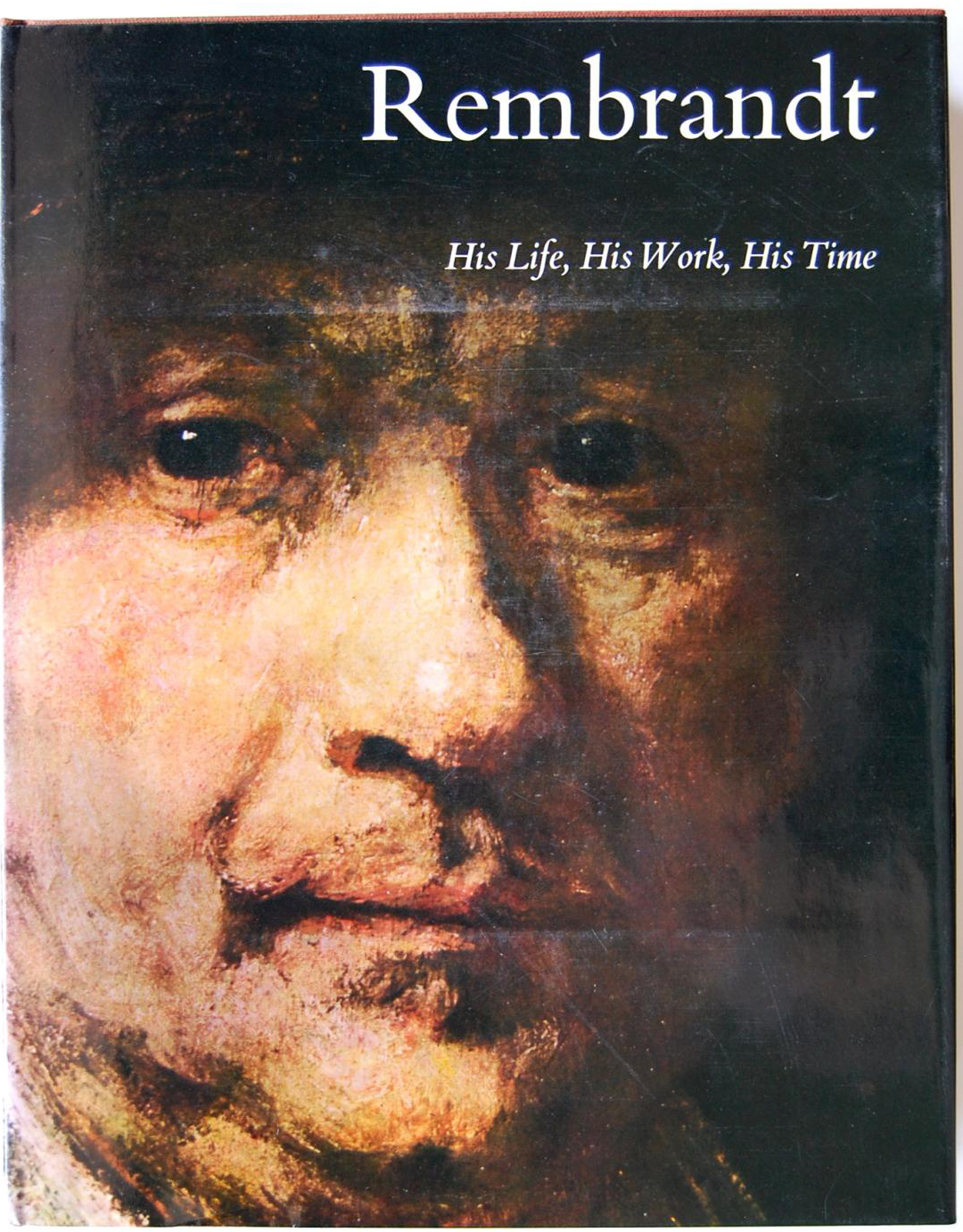
From 2020, let’s set the wayyyyy back machine back to the very first Art Book to captivate me when I was a kid was Rembrandt: His Life, His Work, His Time, by Bob Haak, published by Abrams in 1969. A large (13.5 by 11 inch), 348 page hardcover, with 612 illustrations including 109 hand-tipped color plates, it had these words on the front flap-
“There emerges, in this book, a Rembrandt who is human, fallible, majestic- a man who went through all the common vicissitudes of life and yet was determined to remain true to himself as an artist.”
I’d never seen anything like it. Here was an entire world, the entire life and work of an Artist that just exploded in front of me, singeing my mind as I turned each page, as Rembrandt’s wondrous turned painfully sad life went on, accompanied by the Artist turning his hand from Painting to Drawing to Prints, and back, each among the supreme works done in the medium by anyone, before or since. Most of all, it was the incredible humanity in his Art that has stayed with me to this day. He rendered everyone, from beggars to the exalted, babies and the very old, and foremost among them, he rendered himself, continually throughout his career, from early on, until near the end, creating a body of Self-Portraits, the like of which the world had never seen. Those words on the flap turned out to be the key! As the years went by, I began to understand where that unequalled humanity in Rembrandt’s work came from. Such is the power of a truly great Art Book.
Fast forward a half century to 2020 and the release of 3 great books on the Master, each one of my NoteWorthy Art Books, 2020…
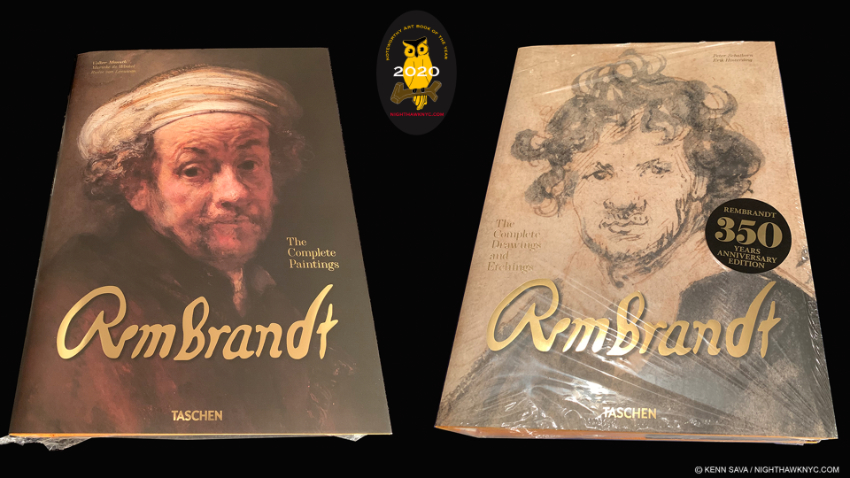
The heavyweight champions. The Complete Paintings weighs in at 17.78 pounds, The Complete Drawings & Etchings at 14.99 pounds.
Rembrandt. The Complete Paintings, Taschen XXL Series
Rembrandt. The Complete Drawings & Etchings, Taschen XXL Series
Rembrandt. The Self-Portraits. Taschen XL Series. Nothing more needs to be said- These will remain THE standard visual reference books for Art lovers on the work of the foremost Painter of humanity in this house for the foreseeable future or until the experts change their minds, yet again, on what is, and what is not, from the hand of the Master and deserves to be included. And you know they will (though not the last WORD, for that Gary Schwartz’ amazing books on Rembrandt will retain their prominence in this household). Again. In the meantime, bliss out in peace. Even Mr. Schwartz approves in an Amazon review2. With all due respect to the esteemed authors, in my opinion, these books would be closer to “perfect” if they had his contributions. Photography, paper, binding, finish are first rate all around.
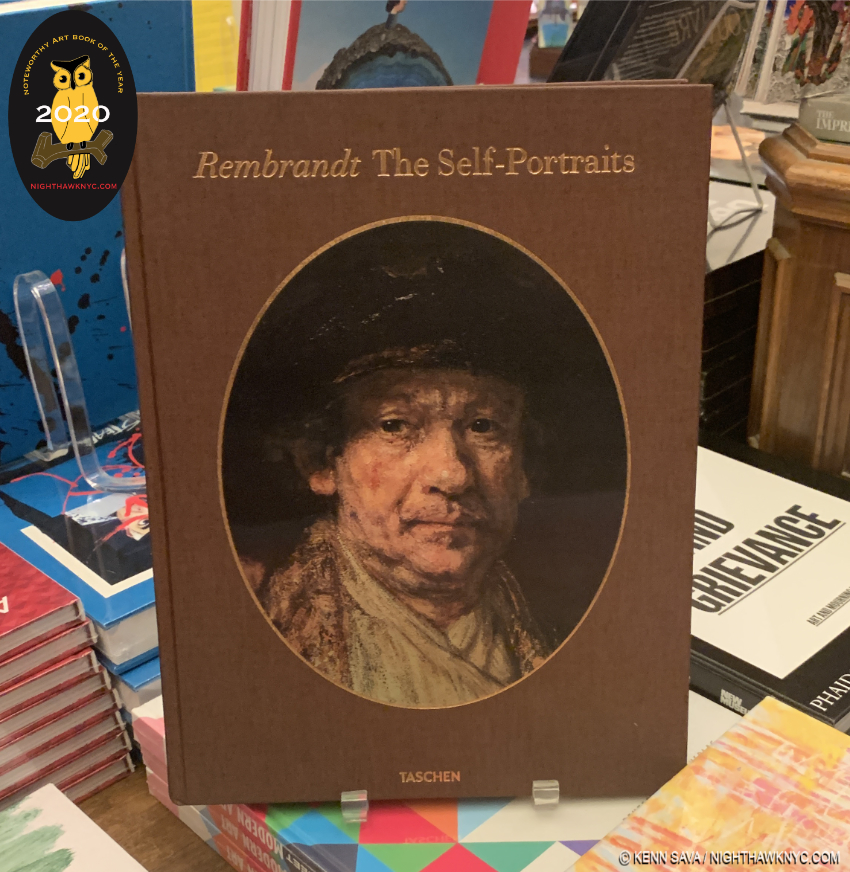
After all these years, well into the age of the selfie, this first body of Self-Portraits still remain at the top of my list of favorite Art works.
It’s a bit bold of Taschen to publish these books given the still in-flux state of what exactly is a Rembrandt, and given that the esteemed publishers have not yet issued a revised version of any of the XXL books. My guess is they felt the completion of the Rembrandt Research Project’s work, published in a six volume set, the last in 2014, provided an opportunity for a collection. I’ve recently heard of at least one change to the accepted canon, but for better or worse, anyone wanting to see the most Rembrandt in a large size will be left with these three books as the best option for the foreseeable future.
Jean-Michel Basquiat, Taschen XXL Series
As I just got through saying about the original Dutch Master, if you want to see as much of the work of the late New York Master, Jean-Michel Basquiat as possible in one volume, as LARGE as possible, Taschen’s XXL Jean-Michel Basquiat is the only book for you. Yes, another Taschen XXL on this list this year. Look at the $200. list price (for this and for each of the Rembrandt Paintings and Drawings books) this way- You’d have to spend a large fortune to travel to the world to see all the Art contained in one of these, IF the work happened to be on view. Even then, you won’t get to see it this close up in what is usually, very good to excellent Art Photography. And consider that much of the key work of Jean-Michel Basquiat is in private hands because the museums were slow to accept and buy his work. They missed the boat. Private collections rarely show or lend their work making the chances to see more than 5 Basquiat Paintings anywhere at any time extremely rare! That’s exactly why I spent so much time running around seeing the 5 Basquiat shows mounted here in NYC last year. My pieces on them are here. In all that effort, I still only saw about 130 or so pieces!
David Hockney: Drawing From Life, National Portrait Gallery, London
The incredibly prolific Mr. Hockney has had a life long obsession with Drawing. That alone makes him a man after my own heart. I’ve followed along with his Drawing evolution with empathy. He’s often spoken of the challenges of Drawing and man, could I relate to them, as I spent 3 days every week Drawing at The Met for about a decade. Sometimes, I’d look at his Drawings and I could see my own efforts. But, most times I looked, he was light years beyond me. His use of an incredibly wide range of Drawing tools and media is unprecedented among major Artists 0in Art History- everything from chalk to graphite to the iPhone and iPad. With each new tool he found his own way, and achieved remarkable results (like his huge, multi page iPad Yosemite Drawings) that are all the more remarkable for being instantly recognizable as David Hockneys. He’s also been proflic in the number of books published on his Art. Yet here is the first collection of part of his Drawing oeuvre this century (the David Hockney: A Drawing Retrospective, 1996, the last overview I can recall). It’s wonderfully done and ingeniously designed, with chapters following the Artist’s evolution of a single subject each, culminating in his Self-Portraits. Published to accompany the show of the same name at the National Portrait Gallery, London, it’s a remarkable book that due to its ingenious concept has an unexpectedly personal feel to it- as you turn the pages, you begin to feel you know each subject. It’s particularly recommended to Drawing students and lovers of the endangered Art of Drawing.
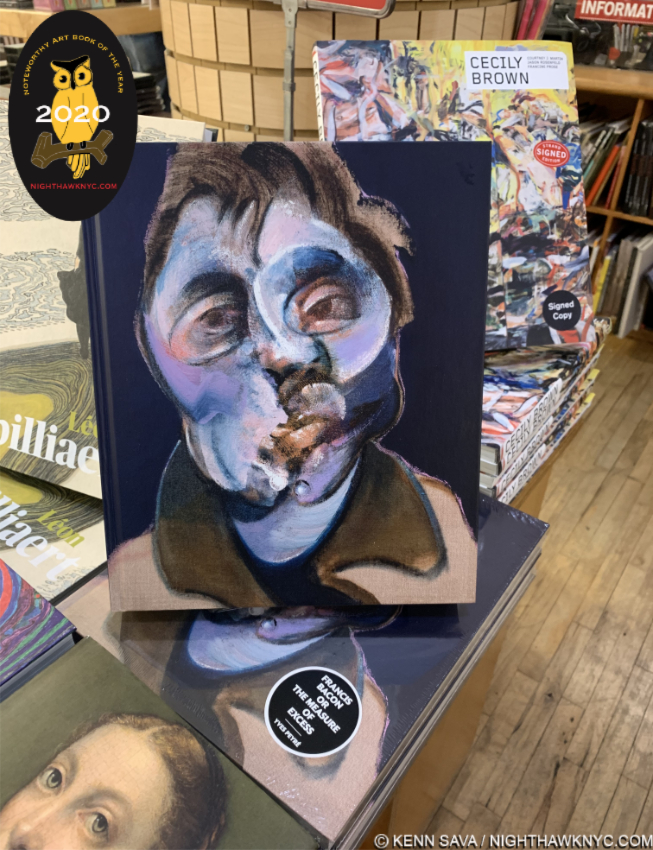
Francis Bacon or The Measure of Excess by Yves Peyre, a friend of Mr. Bacon’s, stands in front of the new monograph on Cecily Brown. Cecily’s father, David Sylvester, was also a long time friend of Bacon’s and gave us the enduring classic Interviews with Francis Bacon.
Francis Bacon or the Measure of Excess, Yves Peyre, ACC Art Books.
Slowly, steadily and continually, the late, great British Artist has now established himself in the upper echelon of Artists I am absolutely obsessed with. To the point that the LAST thing I need is ANOTHER Francis Bacon book. I’d never heard of Yves Peyre, though the cover says he “was a close friend of the artist.” He’s also a poet and has authored a book on Henri Michaux. Well, some of Mr. Bacon’s other friends have already given us books on Mr. Bacon, from David Sylvester (Cecily Brown’s dad, who’s Interviews with Francis Bacon remains most essential) and Michael Peppiatt, down, including another poet, Michel Leiris, and most of them are quite good and have held up for a few decades already. Some of them also offer quite good collections of reproductions of Mr. Bacon’s Art (something EVERY Francis Bacon books seems to need to give us). Yet, as a one volume overview of Francis Bacon’s career with excellent, full 11.73 by 9.83 inch page reproduction, Francis Bacon or the Measure of Excess is my current recommendation and personal choice as a one volume visual reference. The texts of the earlier books remain important, and recommended, summing in a nutshell why it’s VERY hard to have only one Francis Bacon book. Even if you have other books, Mr. Peyre shines the new light of a fresh approach to Bacon, which is somewhat remarkable given how many others have chimed in on his work already, during his life and since his passing in 1992. Of course, if you want THE Francis Bacon publication, the 5 volume Catalog Raisonne is still in print at 1,000 British Pounds a copy, plus shipping. I’ve seen it, and it is exceptionally, even remarkably well done, with Martin Harrison, the foremost authority on Bacon today, astoundingly uncovering 100 previously unseen works (Oh! To find just ONE in a flea market…). The Bacon Estate says it will never be reprinted, and so likely will never be “cheaper.”
Sofonisba’s Lesson, Michael Cole, Princeton University.
Wait. What? Who? Sofonisba Anguissola, 1532-1635, was a female Painter & educator in the Renaissance. Believe it or not, a female Painter in the Renaissance. And a great one, in my view. To say her work has been in eclipse since would be an understatement. I, for one, was unfamiliar with her or her work until I saw this incredible, irresistible face staring out at me from the cover. I doubt I’m alone in that. The Met appears to have nothing by her. Neither does The Frick. Ah, but one person who immediately saw her talent was Il Divino himself, Michelangelo, who informally gave her advice! Nuff said. There is no possible higher recommendation in the Art world than that. Into the gap of knowledge for the rest of us mere mortals steps Michael Cole’s beautifully done, concise, monograph that goes a very long way towards putting her back on all of our maps, where she belongs to stay, in my view, henceforth, as the true Master Artist she was.
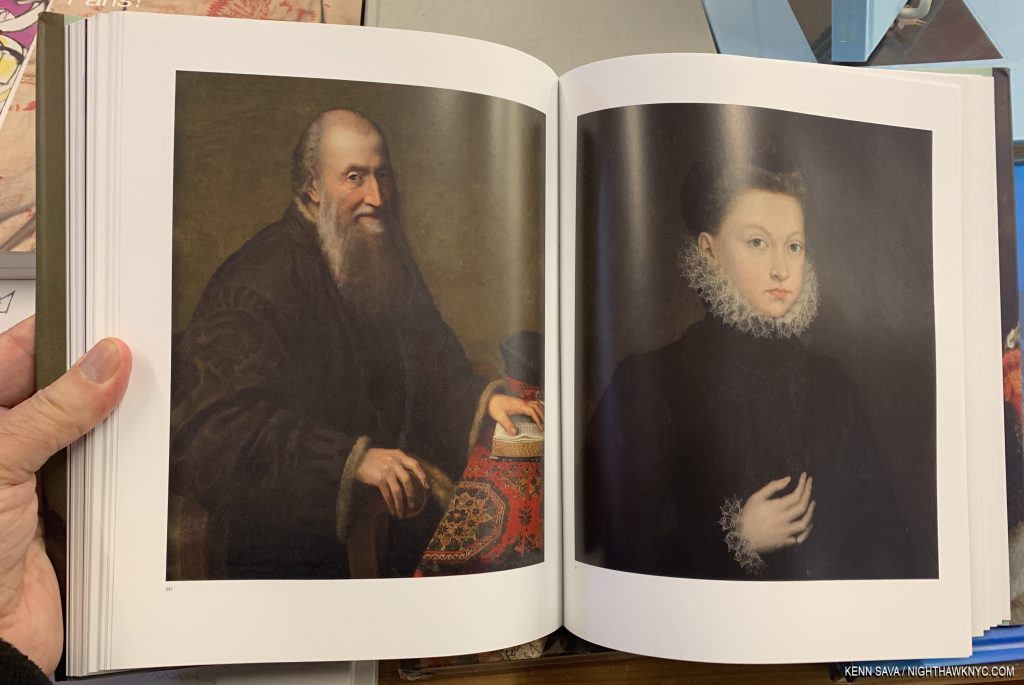
As you can see both of these Portraits are first rate, but look at the table covering, left, and the collars and cuffs on the right. For me, there are number of different techniques, even styles, on views in each work and that speaks volumes about the depth of her skill.
At 2.5 pounds, it’s not as big in size or as weighty as the Rembrandt or Basquiat XXLs on this list, yet I admire this book so much that if it weren’t for Noah Davis being released this year, it might well be my NoteWorthy Art Book for 2020. A lesson for all those Artists struggling for recognition today- Sofonisba’s Lesson comes 12 years before the 500th Anniversary of her birth in Lombardy in 1532. Better late, than never.
Goya Drawings, Thames & Hudson/Prado Museum.
Back in the day before Photography with chemicals ruled the world, Drawing & Painting were the primary means by which events of the day were recorded or, along with those past, recreated. Primary among the great Artists who recorded the events of their day remains Francisco Goya. While his The 3rd of May, 1808, is perhaps, his most well-known such work, though we have no way of knowing if the Artist actually witnessed this scene personally. He also created a large body of Drawings the scope of which, and the humanity of which, only Rembrandt’s can equal in my mind. Like the original Dutch Master, Goya’s Drawings magically capture a pose or an expression in an almost impossible economy of line, while looking for all the world like they were done quickly, without second thought. Ahh…Drawing at its most sublime.
2020 saw the release (or at least the availability in this country) of two excellent Goya Drawings monographs, both of which are published by no less than the Prado Museum, home of the world’s finest & most comprehensive Goya collection, one of which is a NoteWorthy Art Book for 2020. Goya Drawings immediately becomes the choice resource for the lay reader, the Drawing or Painting student or Artist, and for the serious Goya student. A remarkable overview that does not scrimp on detail, insights, or the number of color images, in manages to stay concise and succinct. I picked it and didn’t know what to make of it from very generic front cover. “Goya Drawings”? That’s a huge subject for such a small book. Once I opened it I could not put it down. Sure enough, his Drawings over his entire career are covered, period by period in depth, and while not each and every one is covered, the overview is broad enough to convey the big picture but can be dipped in to at any point for a closer study of any one work, which is written about on the page with its illustration- quite rare in a comprehensive book like this, and an indication of its superb design.
Finally, along with the other Goya Drawings book they published this year, Francisco de Goya: Cuaderno C (or Sketchbook C), which reproduces in facsimile one of his sketchbooks, both books are part of the Prado’s continued effort to make its Goya riches available to the public, online for free, and in these two modestly priced and superb books, Goya Drawings was released in honor of it’s 200th Anniversary in November, 2019. Bravo!
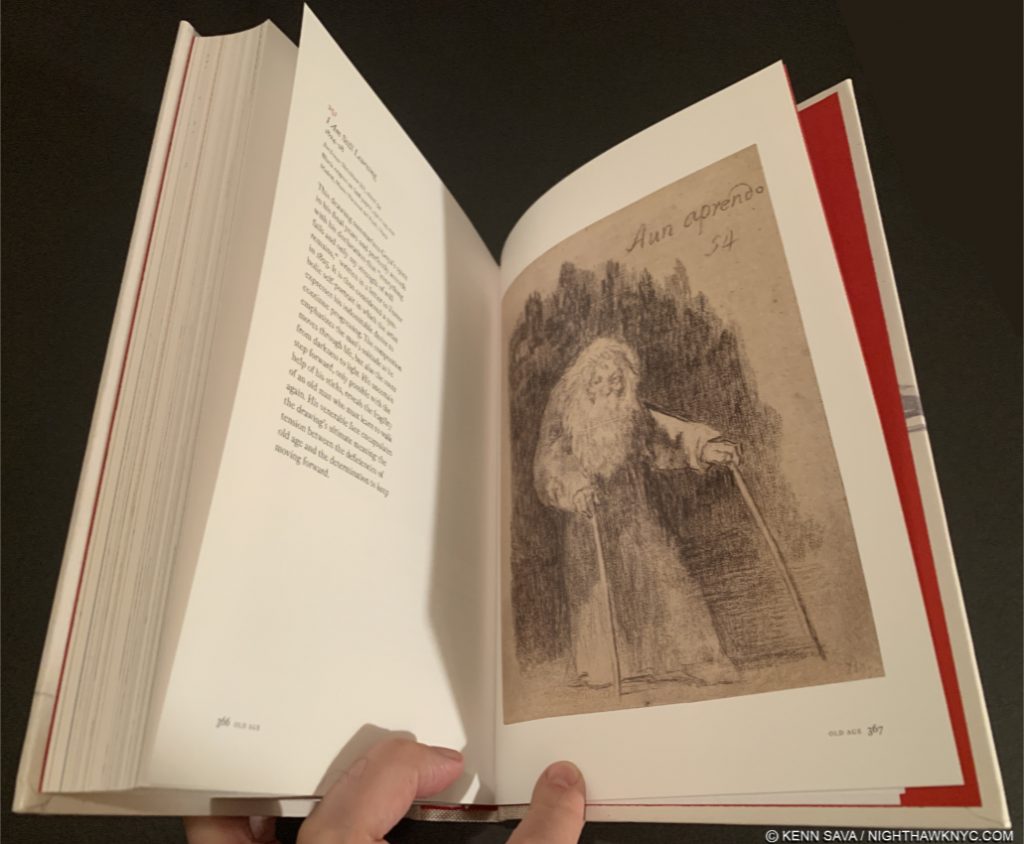
I Am Still Learning, c.1825-8, Lithographic crayon on grey laid paper, on the next to final page. Goya was about 80 when he Drew this symbolic Self-Portrait. A fitting culmination to an immortal career, …and to this piece as words to live by.
Afterword/Forward to 2021
We’re not out of the pandemic woods yet. It might be a while before we are. I hope and pray not a long while. We shall see. Still, many smaller businesses have permanently left us. Many others are hanging on. I have been staying to myself this year, which means living in complete isolation for all of 2020. Yup. You read that right. I will only go into an enclosed space if I have to. Still, I have made very brief journeys into local bookstores, and peered in the window from the street of others, to see how busy they were. Frankly, what I’ve seen is very scary. Throughout the week, you could roll a bowling ball down the aisle of almost any bookstore here and hit no one. On the weekends, they’ve been closer to normal. Part of that is, no doubt, early holiday shopping. Still, the big takeaway for me is that the time is now- today and 2021, to support independent bookstores if you want them to survive. Many of the books and Artists I discover each year (and have my entire life) I’ve discovered browsing books in bookstores- including Rembrandt: His Life, His Work, His Time, by Bob Haak, shown earlier, 40 years ago. You can’t do that online. I’ve been waiting for eBooks to begin to replace physical Art & PhotoBooks for many years now. As 2020 closes, it doesn’t seem that we’re any closer to that than we were 5 or 10 years ago. A high quality eBook could replace most Art books published today- IF the image quality was comparable. They’re not. Screen image quality is nowhere near that of printed image quality. Then, there are Artist’s Books and PhotoBooks. Many of both are painstakingly crafted in every single detail, down to each material used, which no cyber experience can match. These books are often works of Art in themselves, and for many Artists & Photographers who don’t have gallery representation, they provide a primary focus for having their work seen on their terms, the way they intend it to be seen. Physical books in general have a charm and provide a tactile experience no eBook can match. If you value books, like I do, consider supporting your favorite local indie bookstore in person or online. While you can.
*-Soundtrack for this Post is “Better Days Ahead,” by Gil Scott-Heron & Brian Jackson from the album Secrets, 1978…
NighthawkNYC.com has been entirely self-funded and ad-free for over 6 years, during which over 250 full length pieces have been published. If you’ve found it worthwhile, you can donate to keep it going & ad-free below. Thank you!
Written & photographed by Kenn Sava for nighthawknyc.com unless otherwise credited.
To send comments, thoughts, feedback or propositions click here.
Click the white box on the upper right for the archives or to search them.
For “short takes” and additional pictures, follow @nighthawk_nyc on Instagram.
Subscribe to be notified of new Posts below. Your information will be used for no other purpose.

